Human Orbital Spaceflights
![]()
International Flight No. 252Soyuz TMA-11AgatRussia |
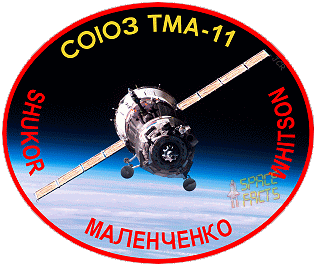 |
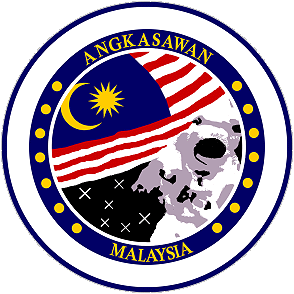 |
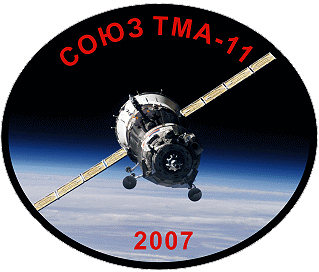 |
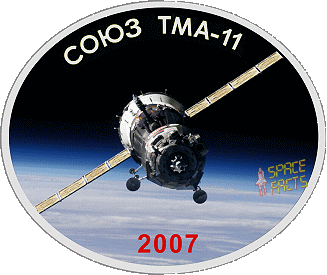 |
|
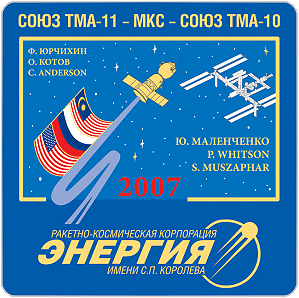 |
||
![]()
Launch, orbit and landing data
walkout photo |
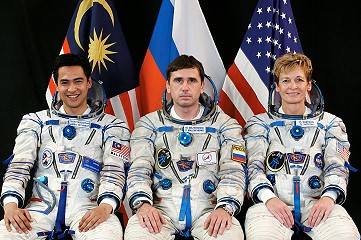 |
|||||||||||||||||||||||
alternative crew photo |
alternative crew photo |
|||||||||||||||||||||||
alternative crew photo |
alternative crew photo |
|||||||||||||||||||||||
alternative crew photo |
||||||||||||||||||||||||
Crew
| No. | Surname | Given names | Position | Flight No. | Duration | Orbits | |
| 1 | Malenchenko | Yuri Ivanovich | Commander | 4 | 191d 19h 07m 05s | 3028 | |
| 2 | Whitson | Peggy Annette | Flight Engineer | 2 | 191d 19h 07m 05s | 3028 | |
| 3 | Sheikh Muszaphar Shukor | Al Masrie bin Sheikh Mustapha | Spaceflight Participant | 1 | 10d 21h 13m 10s | 171 |
Crew seating arrangement
|
 |
|
||||||||||||||||
Backup Crew
|
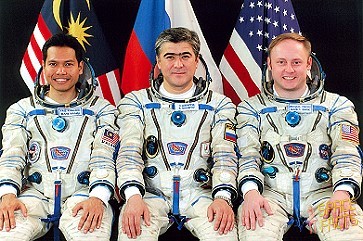 |
||||||||||||||||||||
Hardware
| Launch vehicle: | Soyuz-FG (No. 18M133S Ts15000-020) |
| Spacecraft: | Soyuz TMA-11 (TMA No. 221) |
Flight
|
Launch from the Baikonur Cosmodrome and
landing 428 km west of the intended site in Kazakhstan (414 km west of Arkalyk)
due of a ballistic descent. Al Masrie bin Sheikh Mustapha Sheikh Muszaphar Shukor was the first space traveller from Malaysia. Al Masrie bin Sheikh Mustapha Sheikh Muszaphar Shukor flew as a guest of the Russian government. Under this program, in exchange for the multi-billion purchase of fighter jets by Malaysia, the Russian Federation bore the cost of training two Malaysians for space travel and for sending one to the ISS. Al Masrie bin Sheikh Mustapha Sheikh Muszaphar Shukor's role aboard the Soyuz is referred to as a Spaceflight Participant in English-language Russian Federal Space Agency and NASA documents and press briefings. This mission carried out the ISS Expedition 16. Following a two-day solo flight Soyuz TMA-11 docked with the ISS on October 12, 2007. Peggy Whitson and Yuri Malenchenko replaced Expedition 15 crew members Fyodor Yurchikhin and Oleg Kotov. The Soyuz spacecraft is composed of three elements attached end-to-end - the Orbital Module, the Descent Module and the Instrumentation/Propulsion Module. The crew occupied the central element, the Descent Module. The other two modules are jettisoned prior to re-entry. They burn up in the atmosphere, so only the Descent Module returned to Earth. The deorbit burn lasted 258.3 seconds. Having shed two-thirds of its mass, the Soyuz reached Entry Interface - a point 400,000 feet (121.9 kilometers) above the Earth, where friction due to the thickening atmosphere began to heat its outer surfaces. With only 23 minutes left before it lands on the grassy plains of central Asia, attention in the module turned to slowing its rate of descent. Eight minutes later, the spacecraft was streaking through the sky at a rate of 755 feet (230 meters) per second. Before it touched down, its speed slowed to only 5 feet (1.5 meter) per second, and it lands at an even lower speed than that. Several onboard features ensure that the vehicle and crew land safely and in relative comfort. Four parachutes, deployed 15 minutes before landing, dramatically slowed the vehicle's rate of descent. Two pilot parachutes were the first to be released, and a drogue chute attached to the second one followed immediately after. The drogue, measuring 24 square meters (258 square feet) in area, slowed the rate of descent from 755 feet (230 meters) per second to 262 feet (80 meters) per second. The main parachute was the last to emerge. It is the largest chute, with a surface area of 10,764 square feet (1,000 square meters). Its harnesses shifted the vehicle's attitude to a 30-degree angle relative to the ground, dissipating heat, and then shifted it again to a straight vertical descent prior to landing. The main chute slowed the Soyuz to a descent rate of only 24 feet (7.3 meters) per second, which is still too fast for a comfortable landing. One second before touchdown, two sets of three small engines on the bottom of the vehicle fired, slowing the vehicle to soften the landing. Similar to Soyuz TMA-1 and Soyuz TMA-10 the Soyuz performed a ballistic reentry, a reentry steeper than a normal reentry, due to a malfunction and landed 428 km from the intended landing point. This was the second such event in a row for Soyuz TMA. Although the crew were recovered with no serious injuries, the spacecraft's hatch and antenna suffered burn damage during the unusual reentry. On May 24, 2008 Anatoli Perminov, the head of the Russian Federal Space Agency, announced the results of the investigation into the malfunction. The principal reason for the unusual re-entry was failure of the service module to separate normally as a result of one of five pyro-bolts malfunctioning. The root cause of the failure was not definitively determined, but the Russian investigation concluded that long-term exposure to the electrical environment surrounding the ISS may have damaged the firing system. A similar anomaly occurred during the re-entry of Soyuz 5 in 1969. |
Note
|
Al Masrie bin Sheikh Mustapha
Sheikh Muszaphar Shukor landed on October 21, 2007 at
10:35:49
UTC with Soyuz TMA-10 spacecraft. |
Photos / Graphics
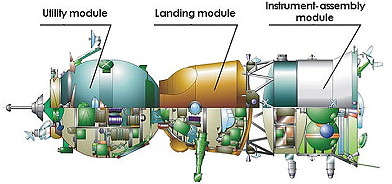 |
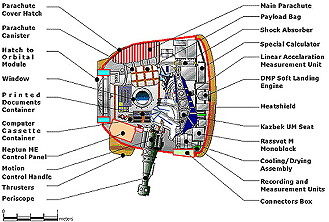 |
 |
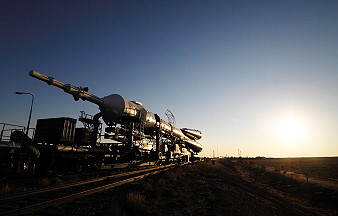 |
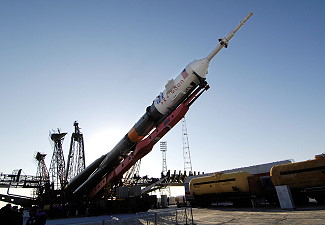 |
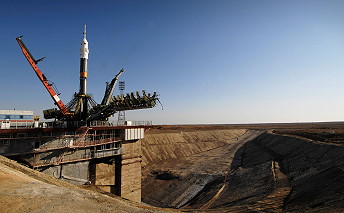 |
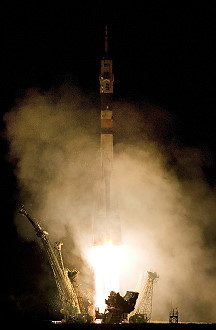 |
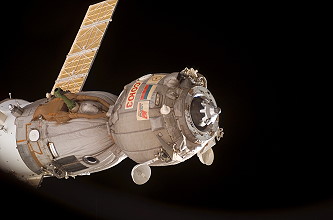 |
 |
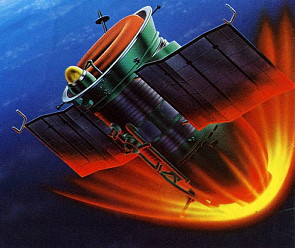 |
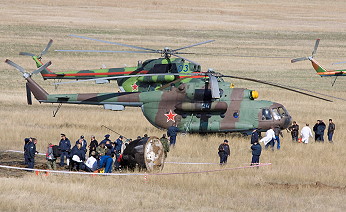 |
| © |  |
Last update on July 27, 2025.  |
 |